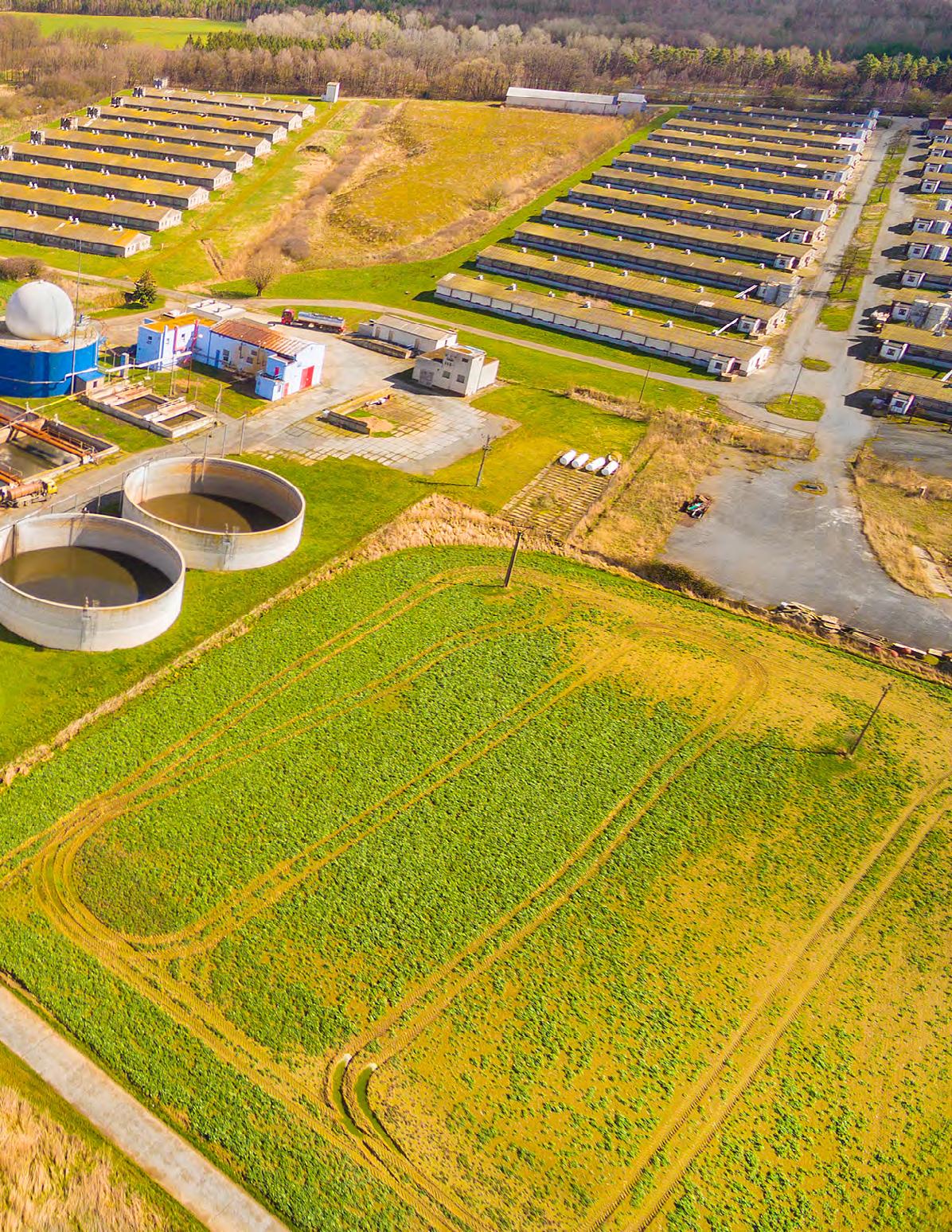
2 minute read
DoD GREENS ITS KITCHENS WITH BIOGAS
Two SANDF military bases on the outskirts of Makhado are taking “green soldiering” to the next level by replacing fossil-fuel electricity in their kitchens with energy generated from food waste.
The 220 people working and living at the Air Force Base (AFB) Makhado on the outskirts of Makhado (formerly Louis Trichardt) in northern Limpopo and the 523 Electronic Warfare Squadron base in the town, are part of a new energy order every time they sit down for a meal.
Advertisement
At both military bases, a biogas plant was installed during 2022 to turn kitchen food waste that is normally sent to landfill into biogas. The plants, which reached full production by early 2023, reduce the amount of coal-fired electricity used in the AFB kitchen and virtually eliminate the use of liquid petroleum gas (LPG) in the 523 one.
The biogas project is one of several waste recycling and energy saving programmes being undertaken by the SANDF in partnership with SANEDI. The Department of Defence (DoD) and the SANDF want to reduce energyusage costs, while ensuring that military bases have energy security in a constrained energy system. The biogas project is also aligned with the SANDF’s green soldiering concept under which strong environmental protection measures are being introduced in its operations.
AFB Makhado prepares daily meals for about 200 people, while around 20 are provided for at 523 Electronic Warfare Squadron every day. The decision to pilot biogas in one small and one large kitchen was partly made to demonstrate that these plants can be tailored to specific needs and provide a wide range of solutions. The kitchens, particularly the one at AFB Makhado, produce large quantities of food waste that is normally sent to landfill. The biogas system fits in perfectly with the DoD’s aim to dispose of waste responsibly. In the process, AFB Makhado stands to save an estimated R250 000 in electricity costs over the 20-year lifetime of the plant.
The biogas plants consist of large, sealed anaerobic digesters in which waste material is decomposed to produce methane gas. These were installed underground at the bases to make them unobtrusive and to prevent any unpleasant smells in the air around them. Kitchen waste aside, the biogas digesters process other waste materials such as cow dung that is sourced from surrounding areas to ensure that the digesters enjoy a “well-balanced diet”. In addition to gas for cooking, the digesters produce an organic by-product, called the digestate, that the bases will use as organic fertiliser in ornamental-plant beds, generating further savings.
SANEDI managed the biogas installations and trained personnel in the maintenance of the plants.
How Biogas Is Produced
Biogas is the result of the natural biological decomposition of organic material in the absence of oxygen. It is generated in enclosed, sealed anaerobic digesters that are fed with waste material ranging from human and animal excreta and manure, to municipal sewage sludge, biodegradable food and agricultural crop residues.

The methane gas released during the process can be used to drive turbines to generate electricity, as a gas in household, commercial and industrial applications, and to power vehicles.
The digestate, or by-product, produced during the process makes an excellent organic fertiliser.
Biogas is arguable the most difficult form of renewable energy to install and operate. Daily maintenance is essential, making the process labour intensive. Once installed, a biogas system can take up to six months to start producing gas optimally. The initial process is like feeding a baby: small quantities of waste material must be added regularly.
The gas cannot be stored or bottled but must be used soon after it is produced and before it dissipates.










